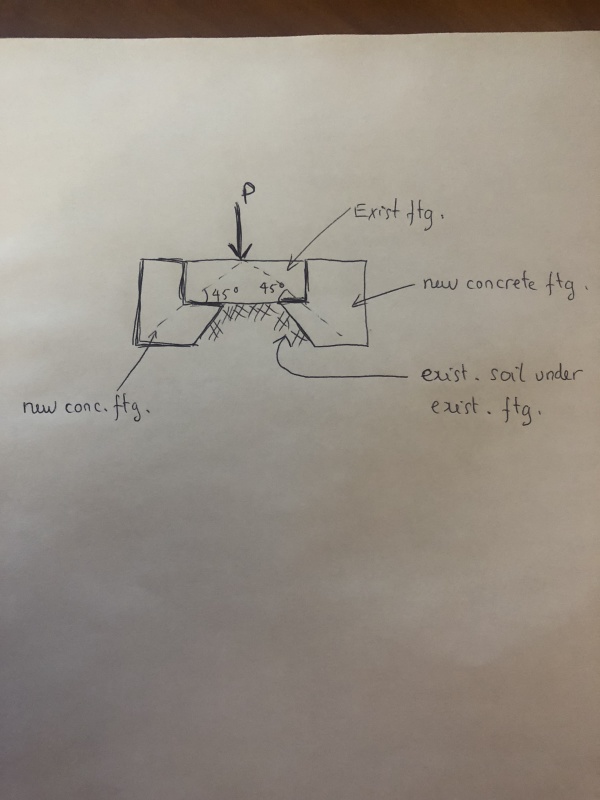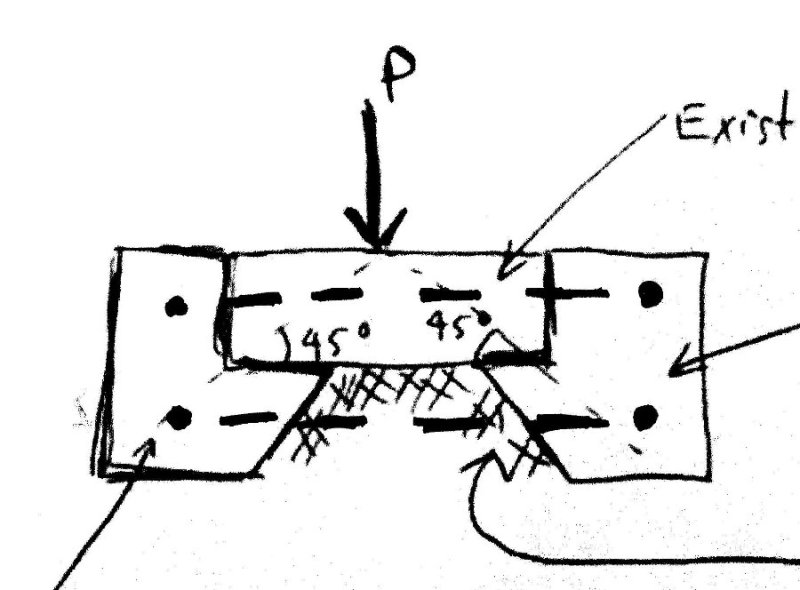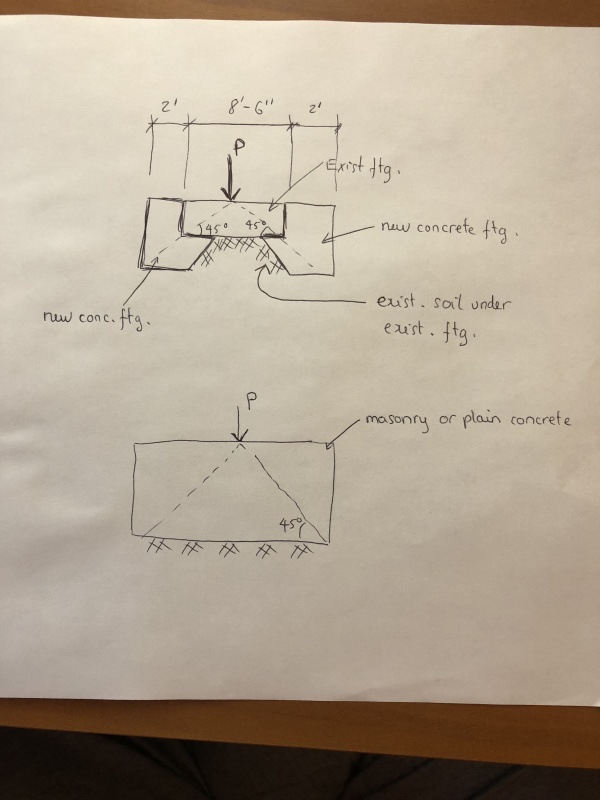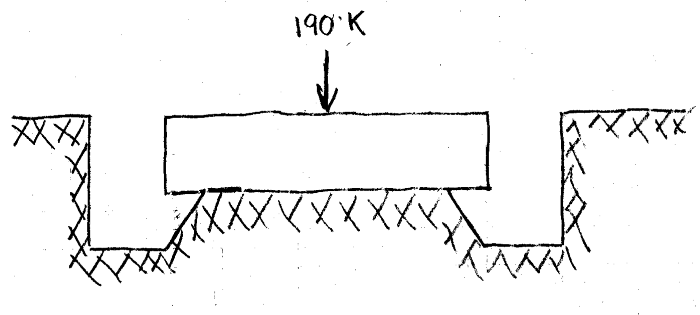L-H
Structural
- Nov 2, 2017
- 16
Hi,
I am trying to find a way to extend the existing square footing to support additional load from the column. I was told that I could follow the idea in the attached photo below. Just dig out some soil at the edge of the existing footing and pour new concrete with some rebars and connect the new footing with the existing by some epoxied dowels. The idea is to utilize the 45 degree dispersion angle and if we can maintain that angle, we don't need to consider the moments in the new & existing footings. Can you guys give some thoughts about this ? I think it will not work that way but don't know how to proof that this idea is wrong.
Thanks

I am trying to find a way to extend the existing square footing to support additional load from the column. I was told that I could follow the idea in the attached photo below. Just dig out some soil at the edge of the existing footing and pour new concrete with some rebars and connect the new footing with the existing by some epoxied dowels. The idea is to utilize the 45 degree dispersion angle and if we can maintain that angle, we don't need to consider the moments in the new & existing footings. Can you guys give some thoughts about this ? I think it will not work that way but don't know how to proof that this idea is wrong.
Thanks





![[idea] [idea] [idea]](/data/assets/smilies/idea.gif)
![[r2d2] [r2d2] [r2d2]](/data/assets/smilies/r2d2.gif)